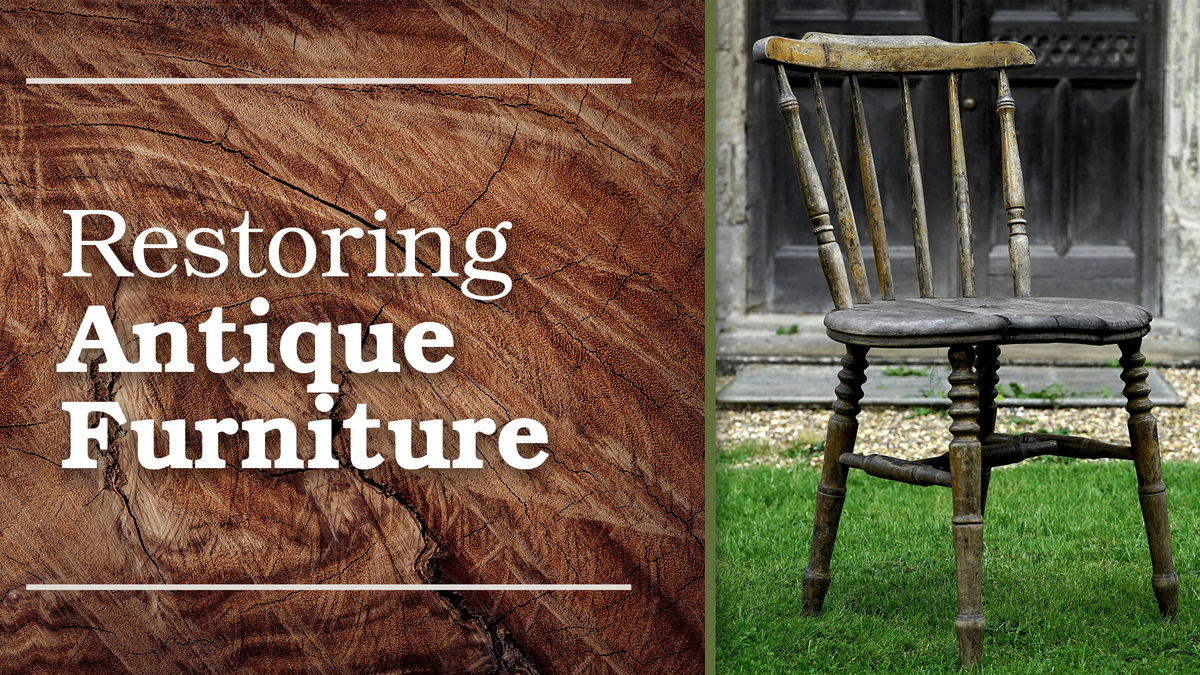Restoring Antique Furniture

When it comes to "old school" there is nothing quite like antique furniture. Made in an era was craftsmanship was a way of life, furniture made from before our time was often built by hand, one piece at a time. That meant that the craftsman spent a lot of time with a given piece. They had ample opportunities to think about what they were building and fill the piece with character.
Sadly, many pieces of antique furniture are quickly falling into disrepair. We forget the value of this age now, since it has passed. Antique furniture is often disposed of or left in a condition where it is vulnerable to mold, termites, water damage, and more.
Restoring antique furniture so it can live on for generations to come is the best way to preserve the past. A master craftsman understands the methods used to build these pieces, and so only they can restore them properly.
Today, antique restoration is easier than ever before. Technology is our friend in this process. We can use all the latest gadgets to document, measure, and replicate key pieces of furniture from ages passed. In doing so, we can maintain the values and knowledge that went into making these pieces.
In this post, we will discuss the basics of antique furniture restoration. We will discuss why antique furniture is important, how 3D scanning is used to preserve antique furniture, and how CNC robots can make these pieces as good as the day they were built. Keep reading to learn more!

Why is Antique Furniture Important?
Antique furniture holds immense significance as it serves as a tangible representation of craftsmanship from previous eras. Each piece embodies the techniques, materials, and artistic styles unique to its time, offering insights into historical lifestyles and cultural values.
Restoration of antique furniture is a meticulous process requiring deep knowledge of traditional techniques. Old School Craftsman utilizes methods like hand-carving, traditional joinery, and period-appropriate finishing to honor the original design while ensuring structural integrity. However, just because this furniture is antique, it doesn't mean that technology is helpful in restoring these pieces.
Contrary to common belief, technology is our friend when it comes to restoring furniture from eras passed. Below we will take a closer look at two technologies that Old School Craftsman uses in all restoration projects, 3D scanning, and CNC robots.
3D Scanning
Old School Craftsman utilizes advanced 3D scanning technology to meticulously measure and document furniture with precision. This innovative process captures the intricate details and dimensions of each piece, creating accurate digital representations. By employing state-of-the-art scanners, we can highlight fine features that may otherwise go unnoticed, ensuring that every curve and contour is recorded.
Once the information is gathered, it is uploaded to our computer, where it is stored indefinitely. With this data at our disposal, we can analyze the original design and craftsmanship, allowing us to recreate missing or damaged parts seamlessly. This technology not only enhances the restoration process but also preserves the historical and aesthetic value of each piece.
Scanners help us create 3D renderings of each piece and this information can then be shared digitally with other craftsmen to help them restore other, similar pieces. By doing this, we contribute to a community of craftsmen who are dedicated to restoring antiques to pristine condition, thus making
CNC Robots
CNC robots have revolutionized the antique restoration industry by ensuring precision and accuracy in creating complex pieces or components. Using Computer-Aided Design (CAD) technology, these machines receive detailed digital blueprints that guide their movements and operations. This allows CNC robots to produce restoration pieces that maintain fidelity to the original designs. Brendon is a wizard when working with this technology, and you would not believe some of the things he can create using the CNC robots.
CNC robots can carve, mill, or engrave materials like wood, metal, and plastic with minimal human intervention. This automation reduces the likelihood of errors and inconsistencies that often accompany manual craftsmanship, enabling the production of high-quality replicas that are nearly indistinguishable from the originals. This technology has been revolutionary because often extremely small or detailed pieces are necessary for antique restoration, and since we put the data into a computer first, we can check for errors before the cutting begins.
Furthermore, CNC robots can operate at high speeds and with remarkable consistency, making them ideal for both small-scale and mass production. This efficiency not only saves time but also reduces material waste, contributing to more sustainable practices in restoration work.
One example of this is the production of spindles. Many places won't make single spindle replacements because they are so time-consuming to produce. But, with a 3D scanner and a CNC robot, this process is done quickly and easily.
Top-Quality Antique Furniture Restoration with Old School Craftsman
Antique furniture restoration is a serious business. These pieces hold the keys to the skills and craftsmanship of eras passed and we are lucky enough to have thousands of pieces made a hundred years ago or more at our fingertips, thanks to a generation of dedicated craftsmen.
If you have antique furniture that needs restoration work, then Old School Craftsman is here to help. Myself, Brent Sears, and my son Brendon are craftsmen with years of experience, along with my wife Trisha, are meticulous when it comes to repairing antique furniture. As a master craftsman, I will oversee your furniture repair personally and can handle all jobs right in my workshop.
Click here to reach out to Old School Craftsman today!
Follow us on Facebook, Instagram, and Pinterest for more discussion on historical homes and updates from our most recent projects.
Happy with the difference Old School Craftsman made on your home refurbishment? Leave us a five-star review here!
